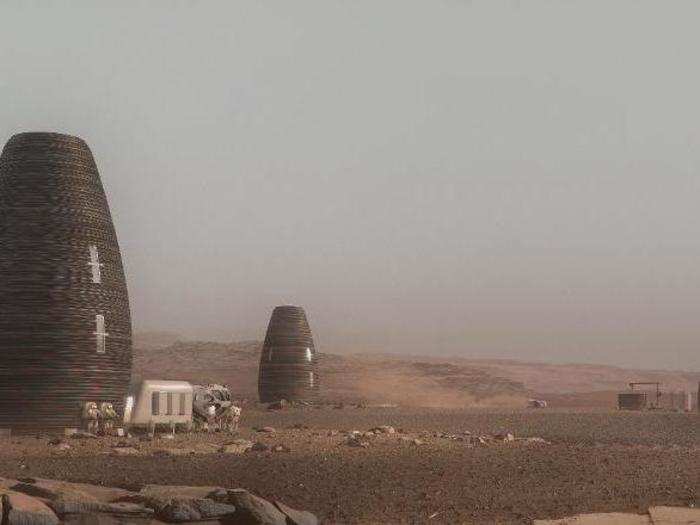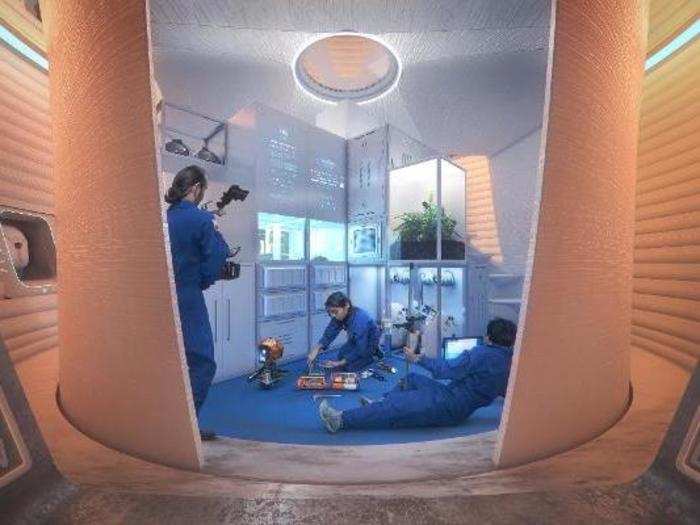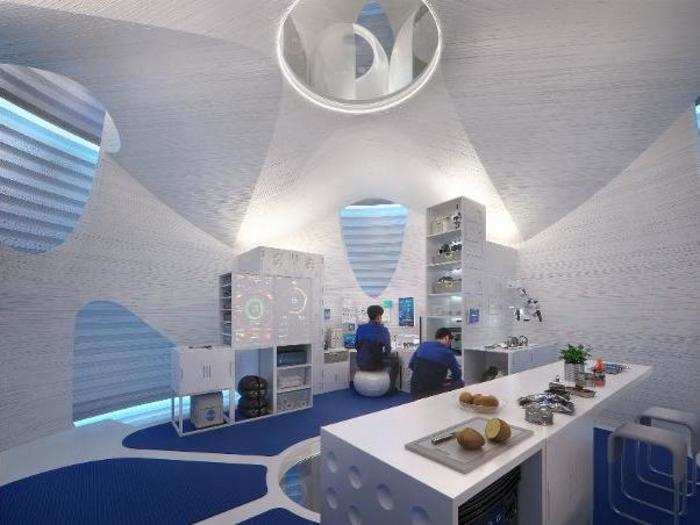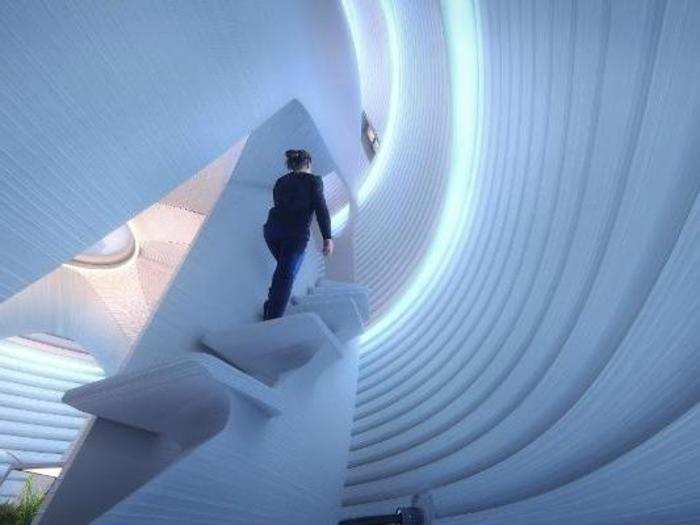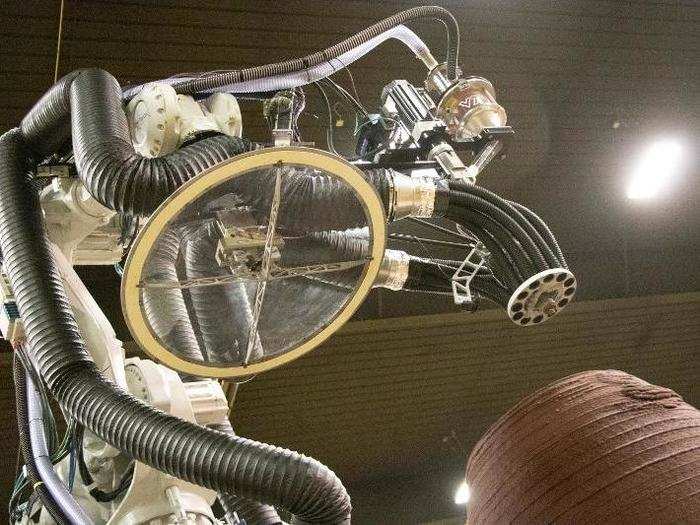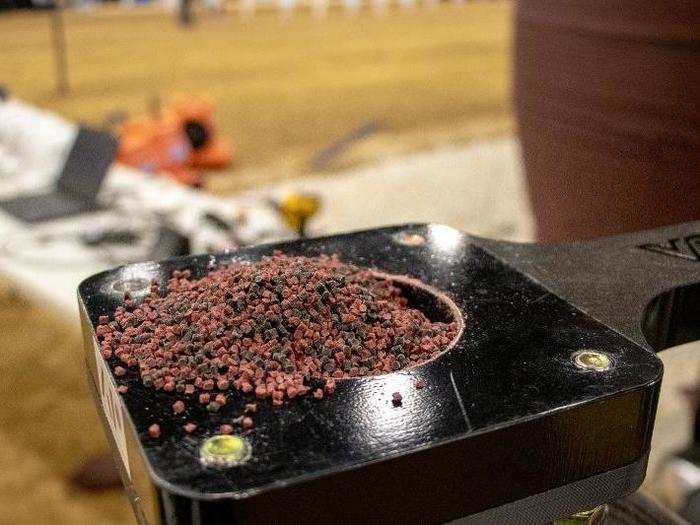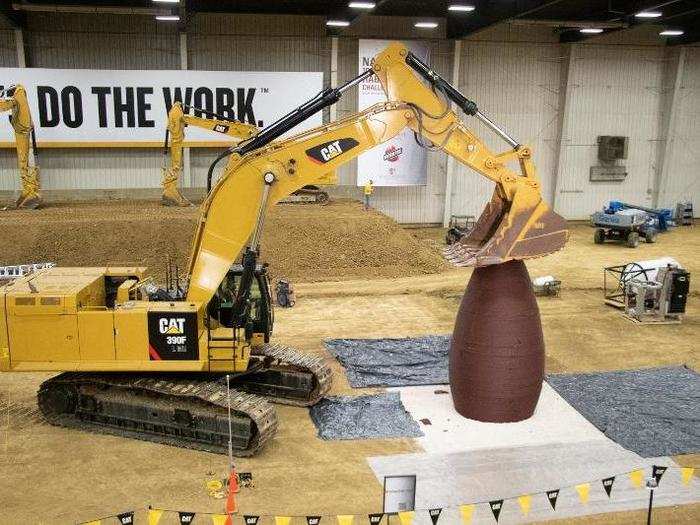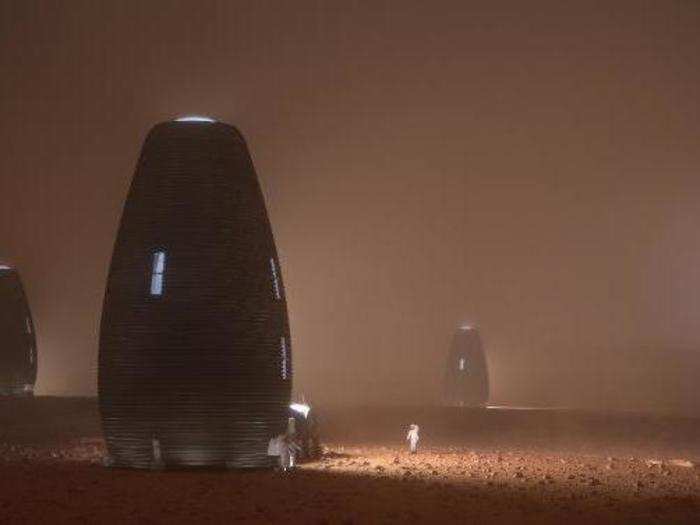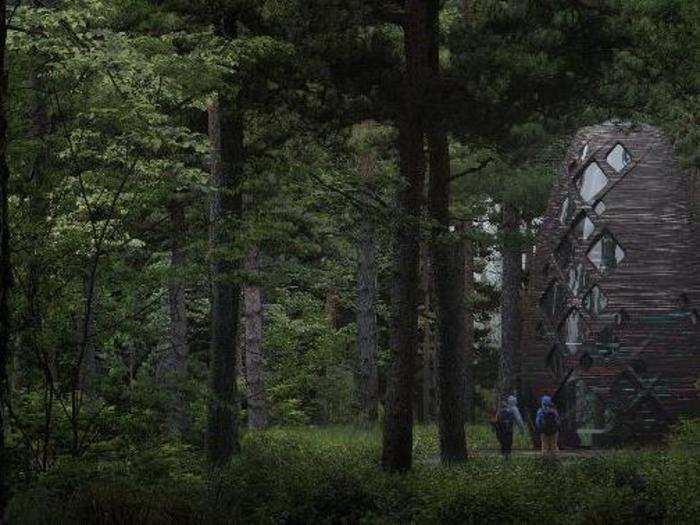Marsha's vertical pods mimic Earth's natural lighting, while offering a peek at their surroundings.
The pod windows can shield inhabitants from solar radiation.
The pods feature hatches that deploy space suits and a docking port for a Mars Exploration Rover.
There are also spaces for sleeping and working.
The design features a garden, kitchen, and a room for exercise and recreation.
The exterior consists of a double-coated shell that keeps the internal temperature consistent.
Inhabitants can climb lighted stairs to access each level.
For the final round of the competition, the design was printed before a live audience in just 30 hours.
An industrial robot was raised by a forklift to print the 15-foot habitat, which contains around 550 layers of material.
The company developed its own formula using materials found naturally on the red planet.
The material, or "Martian polymer," consists of basalt fiber taken from Martian rock and biodegradable plastic made from plants that could theoretically grow on Mars. Most importantly, the formula doesn't require water.
The prototype passed NASA's "crush test," though it did spill some broken pieces.
The designs were tested for leakage, durability, and strength.
Whereas other teams designed low-lying domes, AI SpaceFactory said vertical pods are better suited to handle the atmospheric pressure on Mars.
By printing vertically, the company can keep its industrial robot in one place instead of making it roam across terrain.
The company plans to recycle the materials from its prototype to create a similar habitat on Earth.
The Earth habitat, known as Tera, will launch on Indiegogo as early as September.
"We developed these technologies for space, but they have the potential to transform the way we build on Earth," David Malott, the company's CEO and founder, said in a statement. "By using natural, biodegradable materials grown from crops, we could eliminate the building industry's massive waste."

